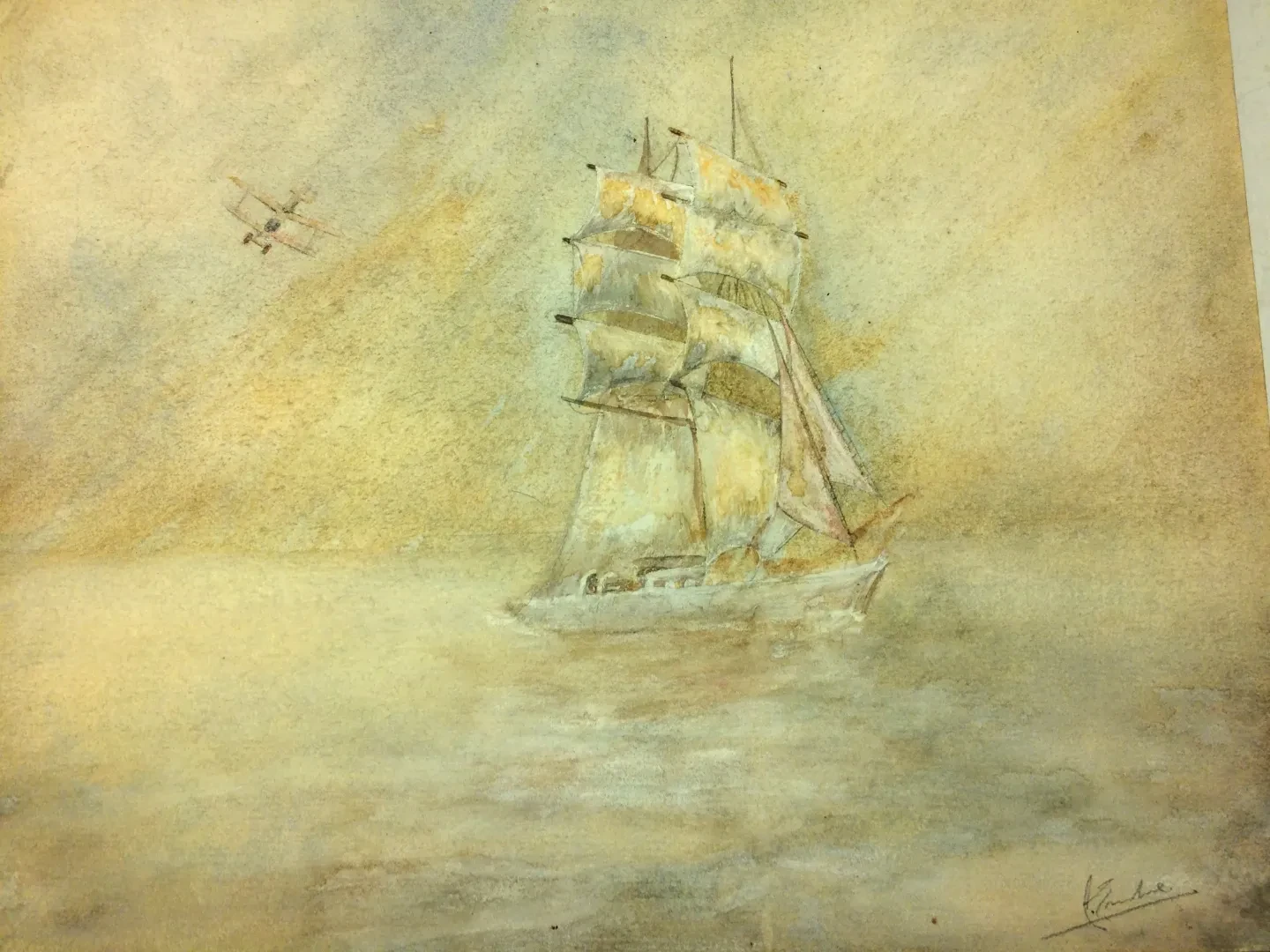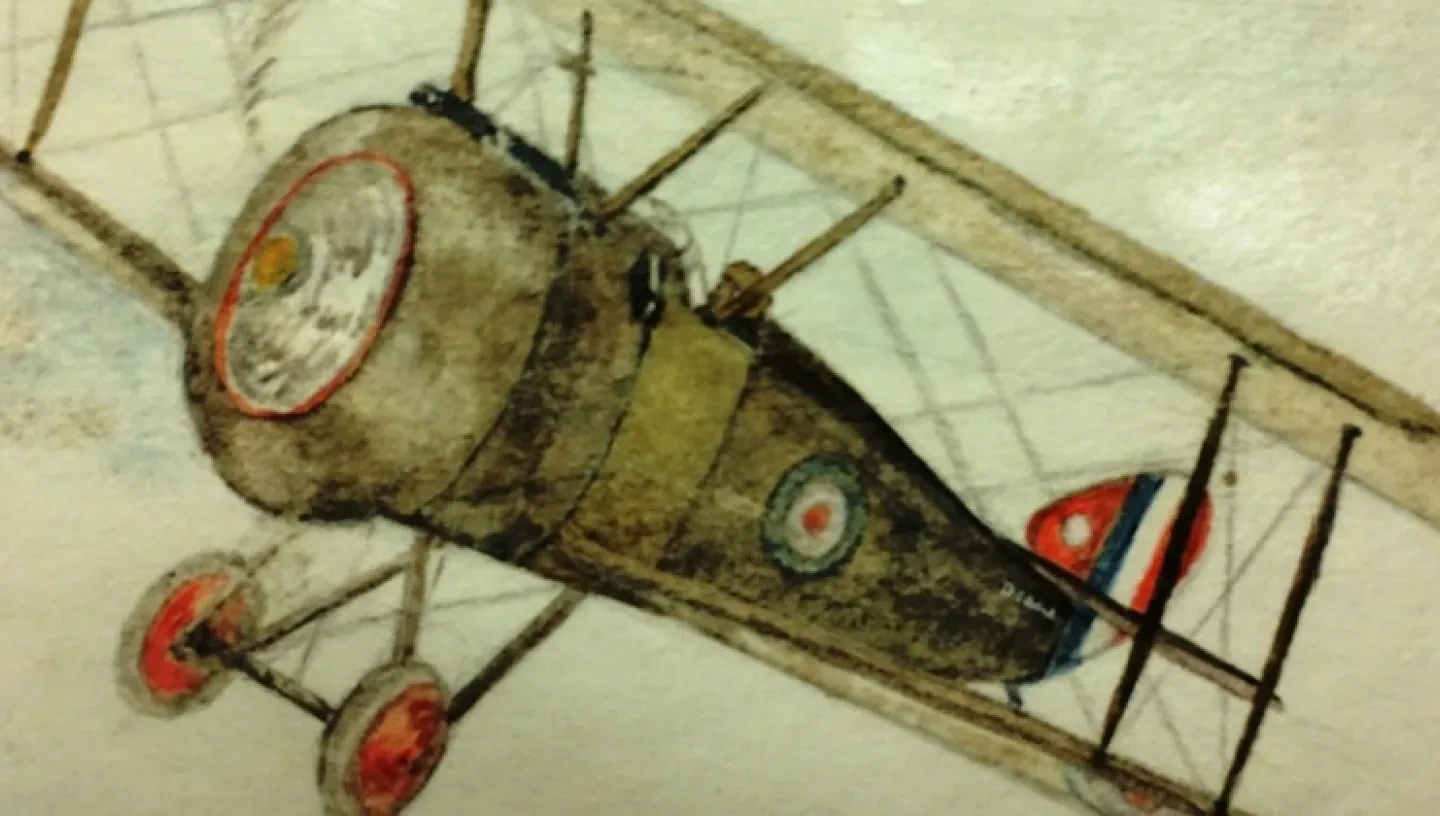
Looking back 100 years into the creation of the Royal Air Force through the words of the pilots.
by Victoria Syrett, Archives Assistant
Visit the Caird Library and Archive
'The Birth of the Royal Air Force, with its wonderful expansion and development will ever remain one of the most remarkable achievements of the Great War.'
These words from the official King’s Message were the beginning of a new era of the skies in Great Britain; combining the Royal Navy Air Service and the Royal Flying Corps to create the Royal Air Force.

Working in the archives of the National Maritime Museum and coming across Royal Air Force items can throw you unless you understand the history behind its creation. Now 100 years after its creation we can look back to these early days of the Royal Air Force through the eyes of those who witnessed it.
The Royal Air Force was the first of its kind in the world. Before the First World War the number of light aircraft was limited with the Army and Navy almost competing over control of the skies. At the outbreak of the Great War there was a clear divide with the Army running the Royal Flying Corp following the Expeditionary Force to France and concentrating on aerial reconnaissance, and the Royal Navy Air Service tasked with air defence of Great Britain. Convoys needed protection from the growing menace of the German submarines and patrols were set up to deter these submarines. Captain Albert James Enstone was one of these people tasked with protecting Great Britain. On 3 April 1916 he joined the Royal Naval Air Service with the rank of temporary probationary flight sub-lieutenant and showing talent was soon confirmed in his rank as flight sub-lieutenant. In April 1917 he became one of the founding members of 4 Naval Squadron, stationed at Bray Dunes on the Franco-Belgian border, tasked with both flying offensive patrols and escorting RNAS bombing missions. We are lucky enough to hold his highly detailed pilot’s flying log books.
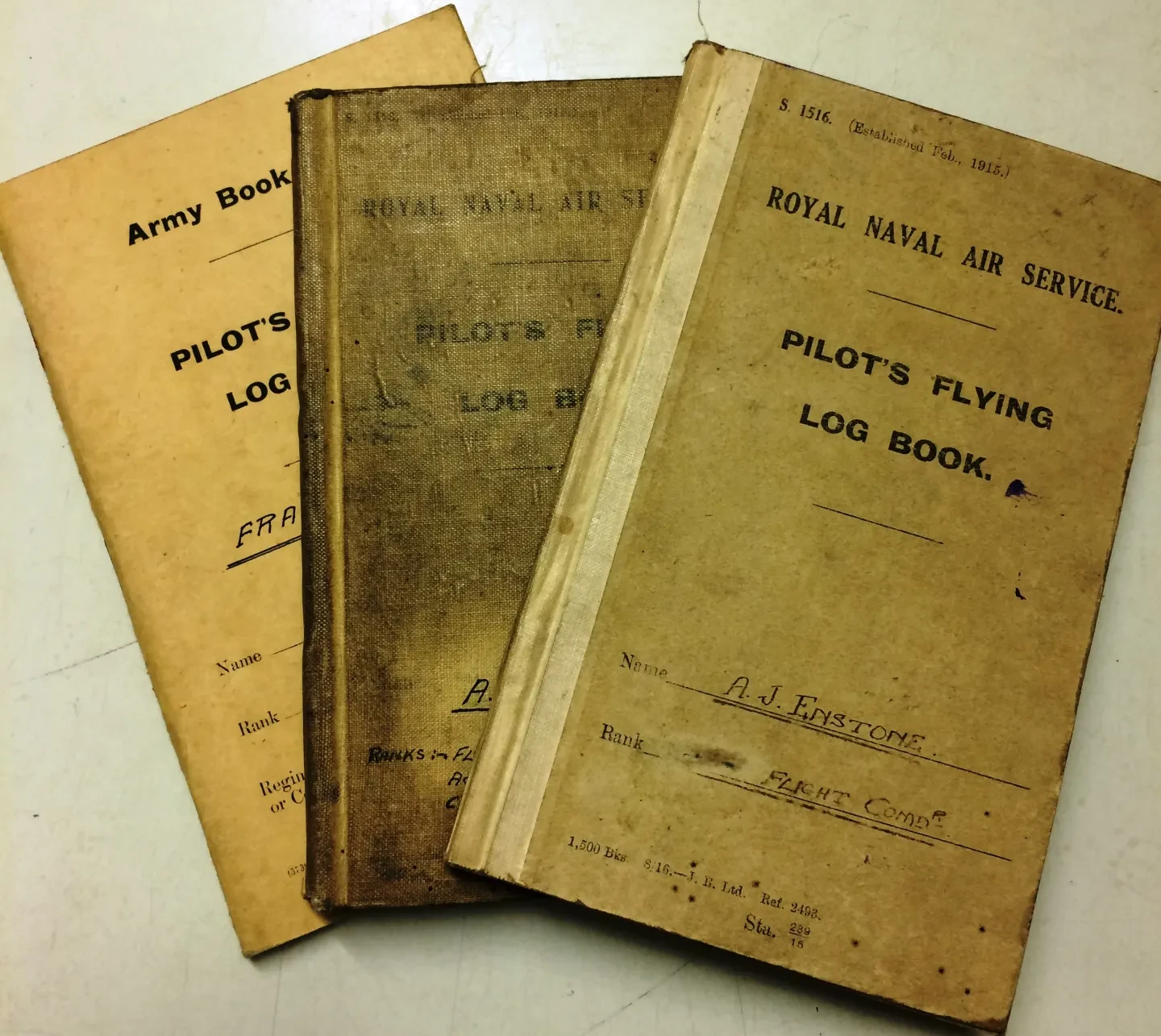
'Offensive patrol May 12th 1917: Sopwith 9899 – Offensive Patrol 5 miles to sea to beyond Zeebrugge protecting fleet bombarding Zeebrugge. – Lost formation after diving to 11,000 ft. after another machine. Saw H.A. attacked by Hemming & nose dive & disappear into the sea. Climbed to 14,000 ft. & was attacked by H.A single seater & saw two more H.A above me. Shot down one H.A & was then attacked by other two. Gun jambed & with great difficulty succeeded in eluding H.A.'
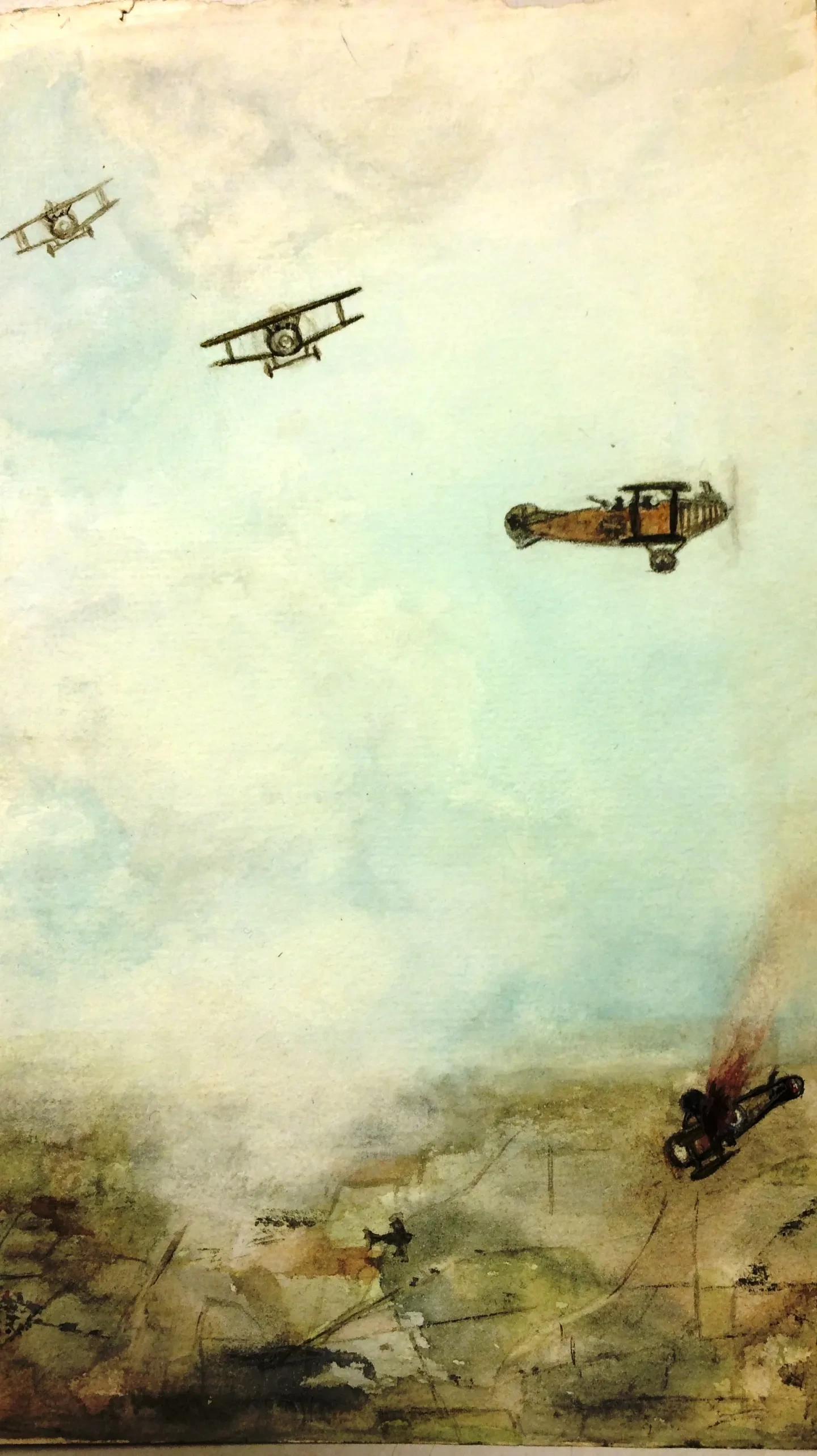
One of the most interesting and unique pieces in this collection is the King’s Message to the Royal Air Force and the temporary certificate created for all those who were transferring into the Royal Air Force, showing the official beginning of the RAF.
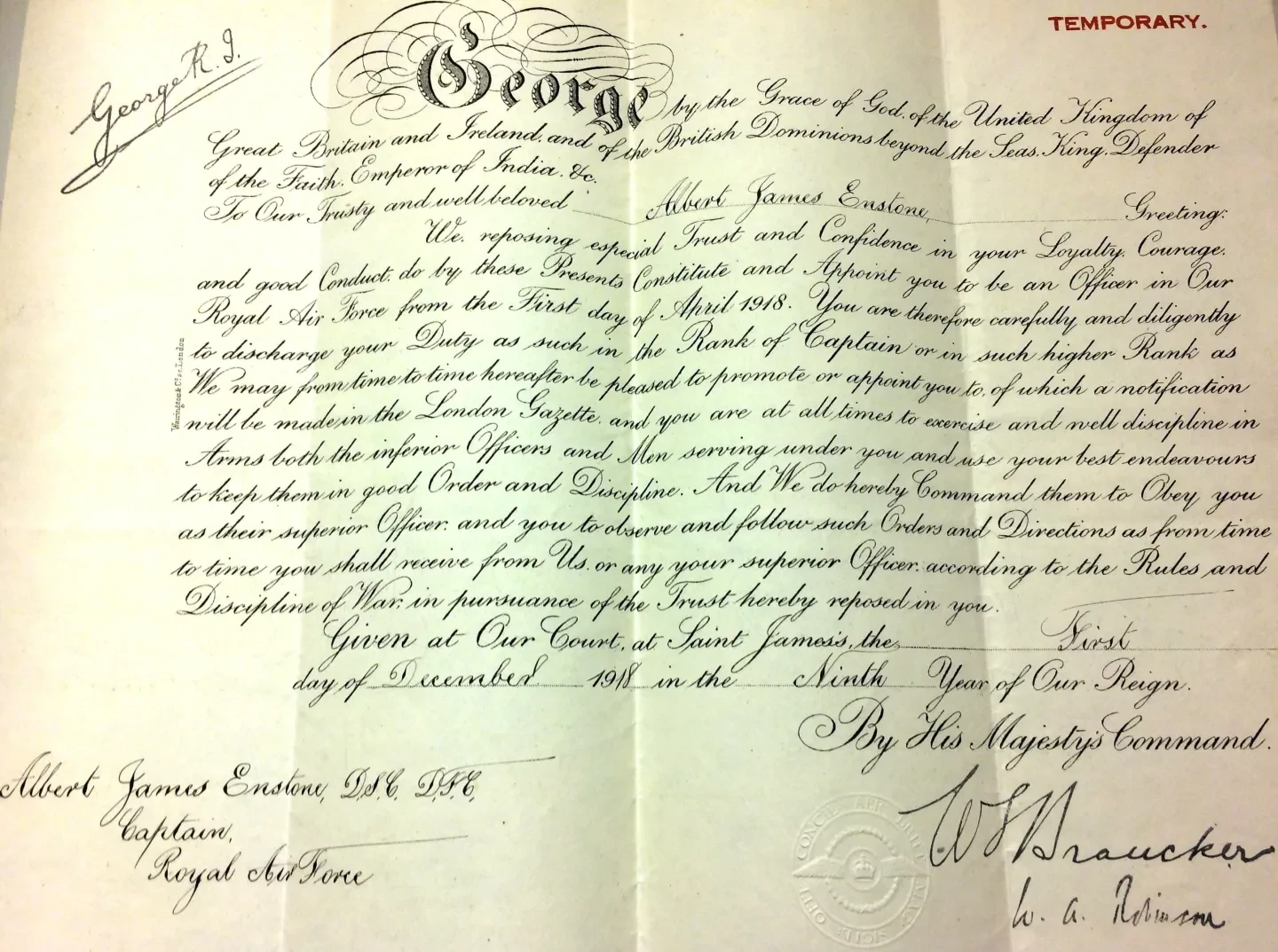
'We reposing especial Trust and Confidence in your Loyalty, Courage and good Conduct do by these Presents Constitute and Appoint you to be an Officer in Our Royal Air Force form the First day of April 1918.'
However, not everyone was overly pleased about being permanently transferred into the Royal Air Force. Captain Henry Theodore Augustus Bosanquet, who specialised in Navigation in the Royal Naval Air Service, wrote a letter attempting to get transferred back to the Royal Navy. Interestingly one of the reasons he lists in his letter is his dislike of the new RAF uniform. (BOS and MSS/54/32.)
After the creation of the service there were still teething problems. Enstone writes about the issues of the belts on Camels getting stuck which can cause issues attempting to get out of the plane. There were also navigation issues; however Victor William Lake Proctor who served for a short period of time as an observer during flights, was a man who was not afraid to ask for directions. Fortunately the planes were still small and light enough that you could pull over in a field to ask. He writes in his logbook (PRT/2/1), dated 7 June 1926 that he:
'Had to stop for 15 minutes to ask for directions between Norfolk and Spittlegate.'
These pilots saw the birth of the Royal Air Force in Britain and helped it gained superiority of the air. Through their words and actions it took its first steps to become the Force we know it today.
